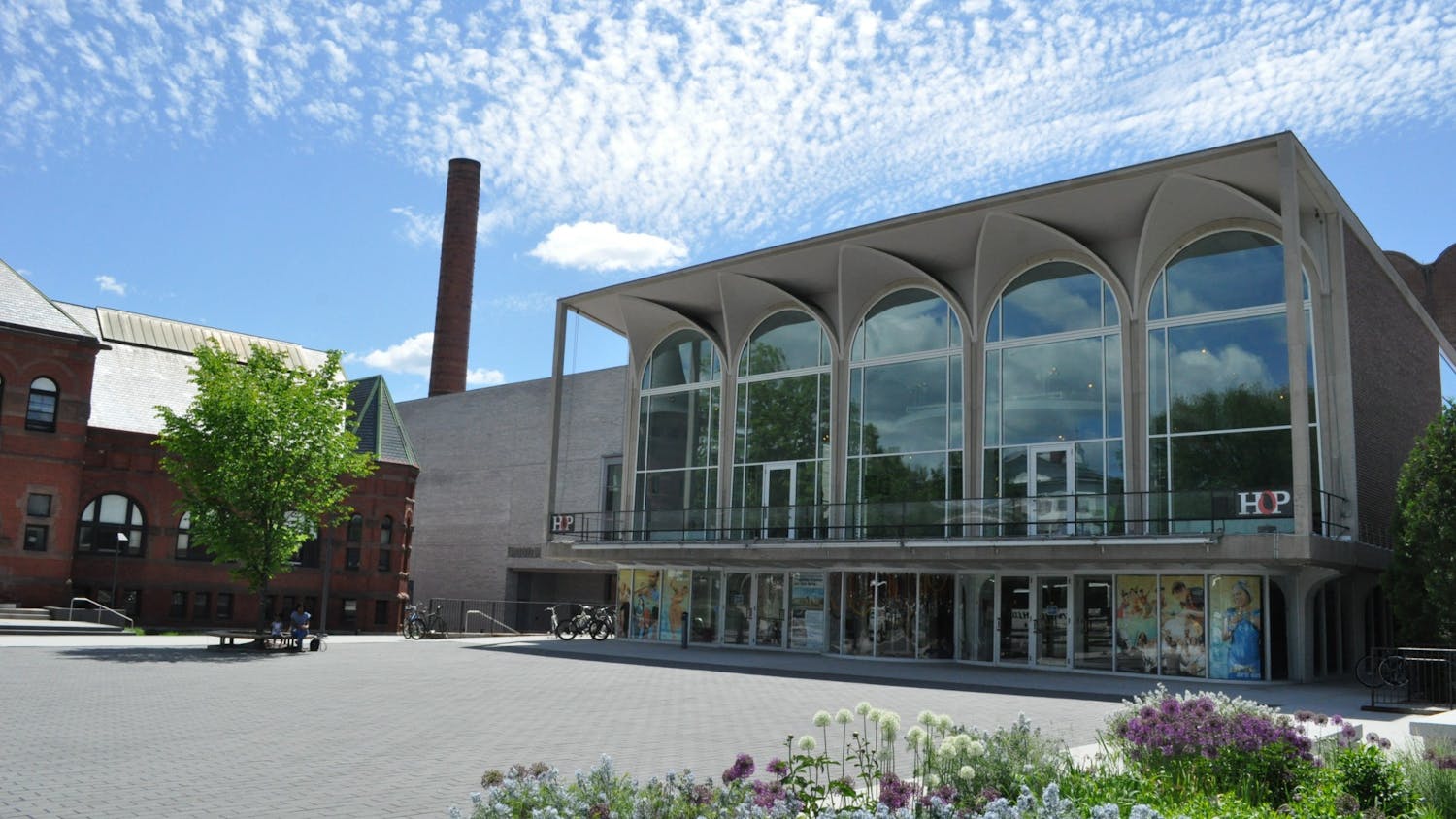Christo, born Christo Javacheff in 1937, studied at the Fine Arts Academy of Sofia in his native Bulgaria, but left to pursue his art in Western Europe. There, he met his wife and artistic partner Jeanne-Claude Denat de Guillebon, with whom he collaborated under the name "Christo" until her death last November. Jeanne-Claude has remained a very important influence on Christo's ongoing projects, as evidenced last night by his repeated claims that his wife could have explained the works better than he could.
Unlike the art found in most museums and private collections, Christo's works are temporary environmental installations works of vast scale that seek to complement and enhance the natural beauty of their surroundings. The couple has completed such impressive feats as stretching 142,000 square feet of orange nylon fabric across a valley in Colorado ("Valley Curtain," 1972) and building a 24.5-mile, steel pole-supported fabric fence that ran inland from the California coast ("Running Fence," 1976).
In his Monday lecture, Christo guided the audience through a slideshow of some of his best known works. His goal for the lecture, he said, was to generate interest in his projects.
"I will answer any question ... [except] questions about other artists or about religions or politics," he said, to the amusement of the audience.
The slideshow began with a photograph from Christo's 1991 project "Umbrellas," an installation of over 3,000 umbrellas situated simultaneously in Japan and southern California.
According to Christo, the location of "Umbrellas" played an integral role in the choices he made regarding color yellow reminded him how "the sun burns the hills of California" in summer, creating a dry, yellow-tinged landscape, whereas the blue umbrellas in Japan called to mind the country's rainy summer climate.
Christo also said that seasons are a common theme in his work. He envisions "Over the River," one of his current endeavors, as a "summer project" since he expects to complete it either at the end of July or the beginning of August, coinciding with the peak of Colorado's rafting season.
Christo, who first proposed "Over the River" to the local community in the 1990s, announced with excitement that it is in the last stage of its permit process. He expects it to be approved by 2011 at the earliest. After approval, it will take two years to "realize the project," he said.
The project will involve six miles of silvery fabric covering a stretch of the Arkansas River. Christo said he intends it to be viewed from above and below, giving two totally different perspectives. Rafters on the river will be able to see the sky through the fabric, creating an almost dream-like effect.
While their works may be beautiful in their perceived simplicity, in reality, the artists spend years meticulously planning each project. In preparation for each installation, Christo studies photos of his selected project sites, makes countless small preparatory sketches and then transfers them to larger drawings.
Christo and Jeanne-Claude have always been adamant that they receive no official funding for their art. Rather, they pay for their expensive projects some costing tens of millions of dollars by selling the preparatory drawings to private buyers and collectors.
In addition to their expense, Christo's projects often take many years to come to fruition. "Over the River," for example, has been in progress since the 1970s. Over the past three decades, Christo, Jeanne-Claude and their team of engineers inspected 89 different rivers in the Rocky Mountain region, covering 15,000 miles, in order to find the perfect location. This marked just the beginning of a long, arduous process.
Christo also said that he has often had to temporarily abandon one project in order to pursue another. For example, one of Christo's most famous and recent projects, "The Gates" in New York City's Central Park, was first proposed in 1979. In 2003, following multiple failed attempts to acquire a permit, Christo found a supporter in Mayor Michael Bloomberg, who allowed the artist to display over 7,500 gates made of fabric and metal in the park for 16 days. In order to pursue this opportunity, Christo and his team had to put "Over the River" on hold.
While Christo talked in depth about his plans for "Over the River," he gave considerably less attention to his other project, "Mastaba," which first appeared in the artist's sketches in 1977.
Christo's design for "Mastaba" from the Arabic word for "bench" calls for 410,000 oil barrels to be arranged in a trapezoid-like structure measuring 1,000 feet wide at the base and 500 feet tall. While this project will be located in the United Arab Emirates, he has tried to create different "Mastabas" before in Houston and Galveston, Texas, but never received permission.
According to a picture on Christo's web site, this project, should it be completed to the scale of Christo's drawings, will be larger than the famous pyramids in Gaza, Egypt.
The lecture ended with a question-and-answer session in which Christo mused on the temporary nature of his installations, his creative philosophy and the ideas behind his projects.
"The projects have this ... nomadic dimension, very fragile," he said. "And of course Jeanne-Claude also compared our projects to our lives. Our art is something that will not last, like our lives, like our childhood ... It creates an urgency to be seen, because tomorrow it will be gone. It has that idea that it will be once in a lifetime and never again."
This view on the ephemerality of existence is perhaps why Christo - unlike many other artists creates his art simply to be appreciated for its "absolute beauty."
Finally, when asked why he chooses to make his art so big, he quipped that "They are big because they are so immensely useless."
Here is an artist who doesn't take himself too seriously now that is something beautiful.




